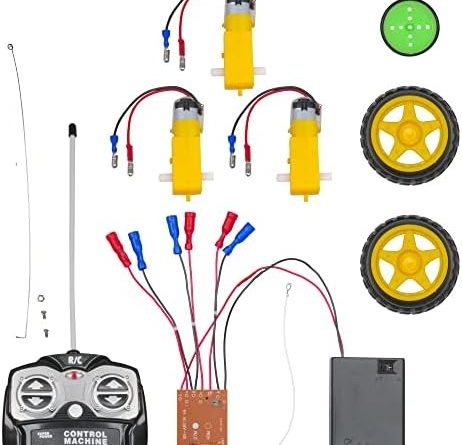






RC Car Shocks: All You Need to Know
As avid RC car enthusiasts, understanding the different components of our vehicles is paramount to having a great racing experience. One such key component that directly affects your car’s handling and performance is the shock absorber. In this article, we’ll dive deep into the vast world of RC car shocks and everything you need to know about them.
What are RC Car Shocks?
Shocks or shock absorbers are the suspension components that maintain optimal tire-to-ground contact and ensure a smooth ride over rough terrain. In an RC car, the shocks essentially serve the same purpose as those in a real car. They absorb impacts when your vehicle hits something or lands on an uneven surface. At the same time, shocks keep your car’s suspension stable by preventing it from bouncing too much, thus improving your car’s handling and performance.
Types of RC Car Shocks
There are different types of shocks available for your RC car, and they differ based on various factors. Here’s an overview of the most common shock types:
1. Coilover Shocks: These shocks use a spring wrapped around the shock body to absorb impact.
2. Diaphragm Shocks: These shocks use a bladder to absorb impact.
3. Gas-Filled Shocks: These shocks have gas and oil inside the body to reduce spring oscillation and improve performance.
4. Air Shocks: These shocks use compressed air to absorb impact and provide better adjustability and tuning.
Factors to Consider when Choosing RC Car Shocks
When selecting appropriate RC car shocks, several factors are worth considering, including:
1. The type of terrain: Different types of terrains such as dirt, gravel or concrete require different shock setups.
2. The car’s weight: Heavier cars require stiffer shock setups to keep the vehicle stable.
3. Track conditions: Certain track conditions such as high-speed tracks, jumps or hard landings require more robust shock setups.
4. Type of racing: Bumpy or off road racing typically requires more suspension travel and a softer shock setup.
5. Driver’s driving style: Some drivers prefer a stiffer shock arrangement, while others prefer a softer setup.
Installation and Maintenance
Installation of RC car shocks can be a daunting task for beginners. However, this should not be a problem if you carefully follow the manufacturer’s instructions. Regular maintenance of your shocks is also essential to ensure optimal performance during racing. You should pay attention to the shock oil levels, ensure proper sealing, and regularly clean and inspect the shocks.
Frequently Asked Questions
1. How often should I rebuild my RC car shocks?
It is recommended to rebuild your shocks every 20 to 30 race days to ensure optimal performance.
2. Can I use different shock oils in my RC car shocks?
Yes, different oils have different viscosity and can provide varying levels of shock performance.
3. Can I mix different types of shocks on my RC car?
It is not recommended since mixing different types of shocks may compromise your car’s handling and performance.
4. Can I adjust the stiffness of my RC car shocks?
Yes, you can adjust the stiffness of your shocks by adjusting the preload on the spring or adding shock oil with different viscosity.
5. How can I tell if my RC car shocks are worn out?
If your car feels unstable, bounces excessively or the suspension bottoms out, it may be time to replace or rebuild your shocks.
Conclusion
RC car shocks are undoubtedly one of the essential components to ensure high-quality racing experience. Understanding the different types, factors to consider when choosing, installation, and maintenance of your car’s shocks is key to keeping your vehicle stable and high-performing. By following the tips and suggestions in this article, you will undoubtedly have a better racing experience and surpass your competitors.
Price: $28.98 - $25.98
(as of Apr 17, 2023 20:27:02 UTC – Details)







